-
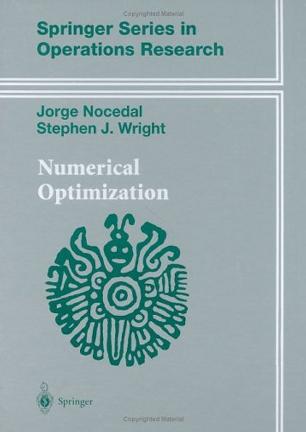
Numerical Optimization
Numerical Optimization presents a comprehensive and up-to-date description of the most effective methods in continuous optimization. It responds to the growing interest in optimization in engineering, science, and business by focusing on the methods that are best suited to practical problems.Drawing on their experiences in teaching, research, and consulting, the authors have produced a textbook that will be of interest to students and practitioners alike. Each chapter begins with the basic concepts and builds up gradually to the best techniques currently available.Because of the emphasis on practical methods, as well as the extensive illustrations and exercises, the book is accessible to a wide audience. It can be used as a graduate text in engineering, operations research, mathematics, computer science, and business. It also serves as a handbook for researchers and practitioners in the field.Above all, the authors have strived to produce a text that is pleasant to read, informative, and rigorous - one that reveals both the beautiful nature of the discipline and its practical side.MMOR Mathematical Methods of Operations Research, 2001: "The book looks very suitable to be used in an graduate-level course in optimization for students in mathematics, operations research, engineering, and others. Moreover, it seems to be very helpful to do some self-studies in optimization, to complete own knowledge and can be a source of new ideas.... I recommend this excellent book to everyone who is interested in optimization problems." -
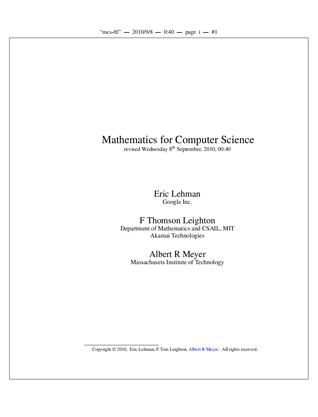
Mathematics for Computer Science
This course is offered to undergraduates and is an elementary discrete mathematics course oriented towards applications in computer science and engineering. Topics covered include: formal logic notation, induction, sets and relations, permutations and combinations, counting principles, and discrete probability. -
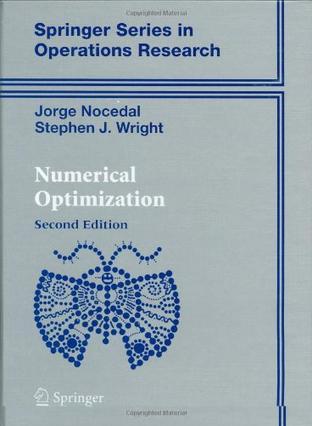
Numerical Optimization
Optimization is an important tool used in decision science and for the analysis of physical systems used in engineering. One can trace its roots to the Calculus of Variations and the work of Euler and Lagrange. This natural and reasonable approach to mathematical programming covers numerical methods for finite-dimensional optimization problems. It begins with very simple ideas progressing through more complicated concepts, concentrating on methods for both unconstrained and constrained optimization. -
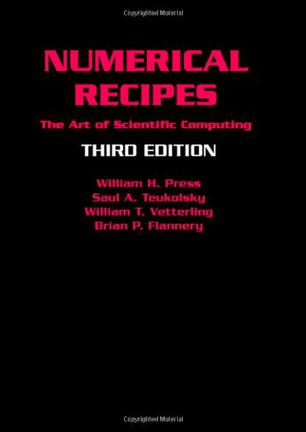
Numerical Recipes 3rd Edition
Do you want easy access to the latest methods in scientific computing? This greatly expanded third edition of Numerical Recipes has it, with wider coverage than ever before, many new, expanded and updated sections, and two completely new chapters. The executable C++ code, now printed in colour for easy reading, adopts an object-oriented style particularly suited to scientific applications. Co-authored by four leading scientists from academia and industry, Numerical Recipes starts with basic mathematics and computer science and proceeds to complete, working routines. The whole book is presented in the informal, easy-to-read style that made earlier editions so popular. Highlights of the new material include: a new chapter on classification and inference, Gaussian mixture models, HMMs, hierarchical clustering, and SVMs; a new chapter on computational geometry, covering KD trees, quad- and octrees, Delaunay triangulation, and algorithms for lines, polygons, triangles, and spheres; interior point methods for linear programming; MCMC; an expanded treatment of ODEs with completely new routines; and many new statistical distributions. For support, or to subscribe to an online version, please visit www.nr.com. • Most comprehensive book available on scientific computing, now updated • New routines for classification and inference HMMs and SVMs, computational geometry, ODEs, interior point methods for linear programming, and MCMC • Over 600,000 Numerical Recipes products in print Contents 1. Preliminaries; 2. Solution of linear algebraic equations; 3. Interpolation and extrapolation; 4. Integration of functions; 5. Evaluation of functions; 6. Special functions; 7. Random numbers; 8. Sorting and selection; 9. Root finding and nonlinear sets of equations; 10. Minimization or maximization of functions; 11. Eigensystems; 12. Fast Fourier transform; 13. Fourier and spectral applications; 14. Statistical description of data; 15. Modeling of data; 16. Classification and inference; 17. Integration of ordinary differential equations; 18. Two point boundary value problems; 19. Integral equations and inverse theory; 20. Partial differential equations; 21. Computational geometry; 22. Less-numerical algorithms; References. -
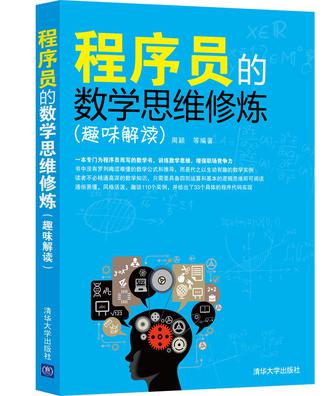
程序员的数学思维修炼(趣味解读)
本书是一本专门为程序员而写的数学书,介绍了程序设计中常用的数学知识。本书门槛不高,不需要读者精通很多高深的数学知识,只需要读者具备基本的四则运算、乘方等数学基础知识和日常生活中的基本逻辑判断能力即可。本书拒绝枯燥乏味的讲解,而是代之以轻松活泼的风格。书中列举了大量读者都很熟悉,而且非常有趣的数学实例,并结合程序设计的思维和算法加以剖析,可以训练读者的数学思维能力和程序设计能力,进而拓宽读者的视野,增强职场竞争力。 本书共11章,分别介绍了数据的表示、神奇的素数、递归、排列组合、用余数进行数据分组、概率、复利、数理逻辑、推理、几何图形构造、统筹规划等程序设计中常用的数学知识,从而引导读者深入理解编程中的数学方法和思路。本书包含的实例有结绳记事、孪生素数、梅森素数、哥德巴赫猜想、阶乘、汉诺塔、斐波那契数列、乘法原理、加法原理、字符编码、密码长度、日历中的数学、心灵感应魔术、约瑟夫环、智叟分牛、百枚钱币鼓士气、庄家的胜率、中奖概率、用概率方法求π值、复利的威力、对折纸张、舍罕王的赏赐、三段论、选言推理、假言推理、关系推理、花盆摆放、残缺棋盘、丢失的线条、田忌赛马、背包问题等。 本书适合广大程序设计人员及数学爱好者阅读,尤其适合有一定程序设计经验,但还需要进一步加深对程序设计理解的人员阅读。本书对IT求职人员、信息学竞赛和大学生程序设计竞赛等参赛学员也有很好的参考价值。 -
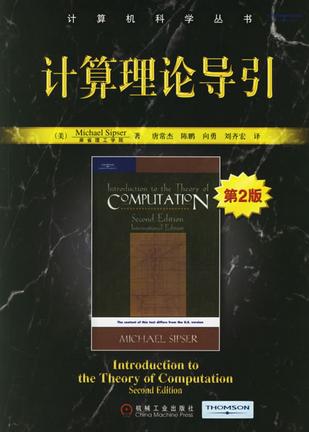
计算理论导引
本书是计算理论领域的经典著作,被国外多所大学选用为教材。本书以注重思路、深入引导为特色,系统地介绍计算理论的三大主要内容:自动机与语言、可计算性理论和计算复杂性理论。同时,对可计算性和计算复杂性理论中的某些高级内容作了重点讲解。全书通过启发性的问题、精彩的结果和待解决问题来引导读者挑战此领域中的高层次问题。新版的一大亮点是增加了更多习题、教辅资料和部分习题解答,更加有利于教学。 全书叙述由浅入深、详略得当,重点突出,不拘泥于技术细节。可作为计算机专业高年级本科生和研究生的教材,也可作为相关专业教师和研究人员的参考书。